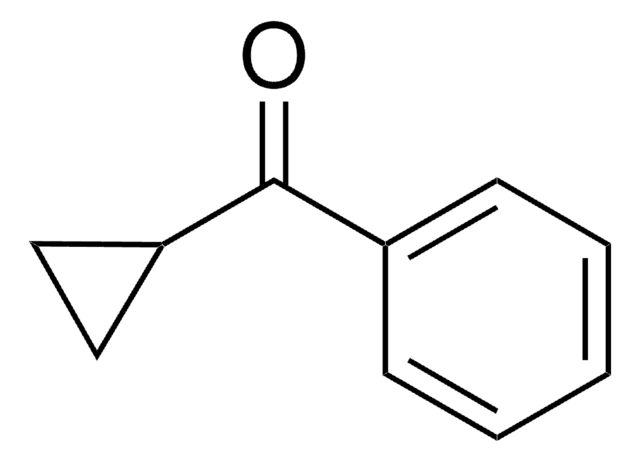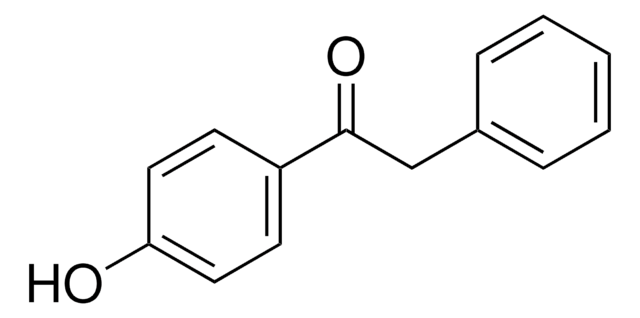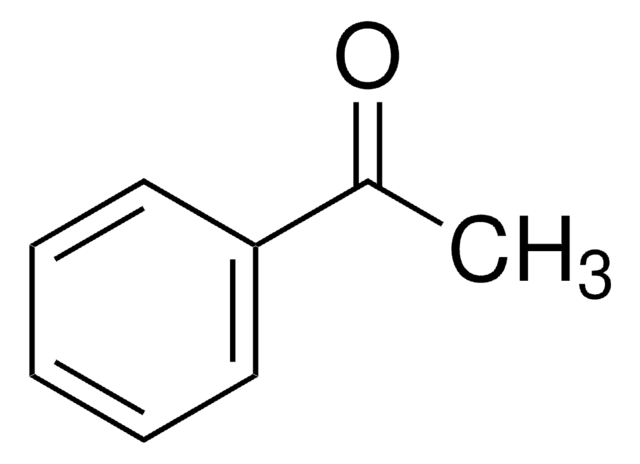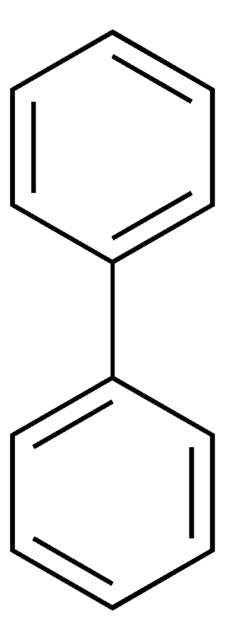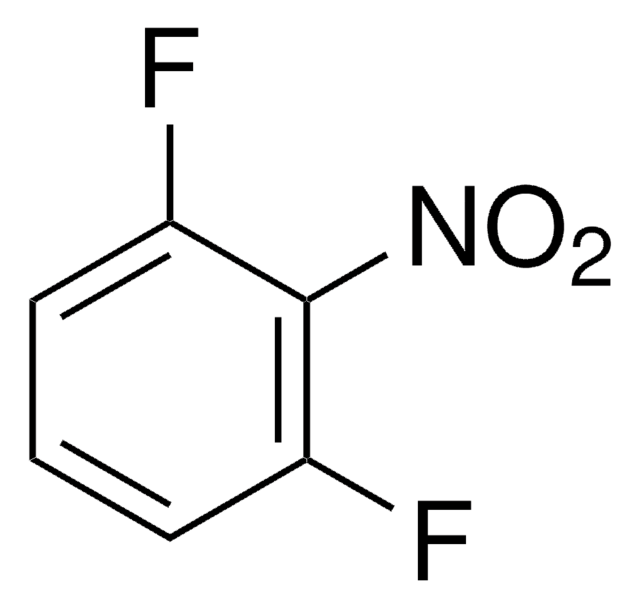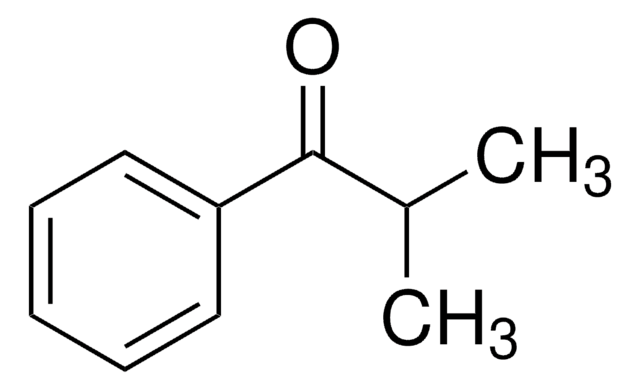337048
2,2-Dimethyl-1-phenyl-1-propanol
99%
Se connecterpour consulter vos tarifs contractuels et ceux de votre entreprise/organisme
About This Item
Formule linéaire :
(CH3)3CCH(C6H5)OH
Numéro CAS:
Poids moléculaire :
164.24
Numéro MDL:
Code UNSPSC :
12352100
ID de substance PubChem :
Nomenclature NACRES :
NA.22
Produits recommandés
Niveau de qualité
Pureté
99%
Point d'ébullition
90 °C/5 mmHg (lit.)
Pf
43-45 °C (lit.)
Groupe fonctionnel
hydroxyl
phenyl
Chaîne SMILES
CC(C)(C)C(O)c1ccccc1
InChI
1S/C11H16O/c1-11(2,3)10(12)9-7-5-4-6-8-9/h4-8,10,12H,1-3H3
Clé InChI
YBVRFTBNIZWMSK-UHFFFAOYSA-N
Description générale
Raney nickel and Raney cobalt catalyzed transfer hydrogenolysis of 2,2-dimethyl-1-phenyl-1-propanol has been reported. Kinetic resolution of 2,2-dimethyl-1-phenyl-1-propanol using a lead dioxide anode modified with poly-S-valine grafted on to a polypyrrole film has been reported. An efficient Cu(I)-catalyzed oxidation of 2,2-dimethyl-1-phenyl-1-propanol with di-tert-butyldiaziridinone as oxidant under mild conditions has been investigated.
Application
2,2-Dimethyl-1-phenyl-1-propanol was used in the preparation of 2,2-dimethylpropiophenone.
Code de la classe de stockage
11 - Combustible Solids
Classe de danger pour l'eau (WGK)
WGK 3
Point d'éclair (°F)
206.6 °F - closed cup
Point d'éclair (°C)
97.00 °C - closed cup
Équipement de protection individuelle
Eyeshields, Gloves, type N95 (US)
Faites votre choix parmi les versions les plus récentes :
Déjà en possession de ce produit ?
Retrouvez la documentation relative aux produits que vous avez récemment achetés dans la Bibliothèque de documents.
Poly (pyrroles) containing chiral side chains: effect of substituents on the chiral recognition in the doped as well as in the undoped state of the polymer film.
Pleus S and Schulte B.
Journal of Solid State Electrochemistry, 5(7-8), 522-520 (2001)
Brant Landers et al.
The Journal of organic chemistry, 76(5), 1390-1397 (2011-01-22)
The use of commercially available (SIPr)Pd(cinnamyl)Cl (SIPr = 1,3-bis(2,6-diisopropylphenyl)-4,5-dihydroimidazol-2-ylidene) as a precatalyst for the anaerobic oxidation of secondary alcohols is described. The use of this complex allows for a drastic reduction in the reaction times and catalyst loading when compared
Transfer hydrogenolysis of aromatic alcohols using Raney catalysts and 2-propanol.
Gross BH, et al.
Applied Catalysis A: General, 219(1), 281-289 (2001)
Yingguang Zhu et al.
Organic letters, 15(5), 992-995 (2013-02-19)
A novel and efficient Cu(I)-catalyzed oxidation of alcohols has been achieved with di-tert-butyldiaziridinone as the oxidant under mild conditions. A wide variety of primary and secondary alcohols with various functional groups can be oxidized to aldehydes and ketones in high
Notre équipe de scientifiques dispose d'une expérience dans tous les secteurs de la recherche, notamment en sciences de la vie, science des matériaux, synthèse chimique, chromatographie, analyse et dans de nombreux autres domaines..
Contacter notre Service technique
